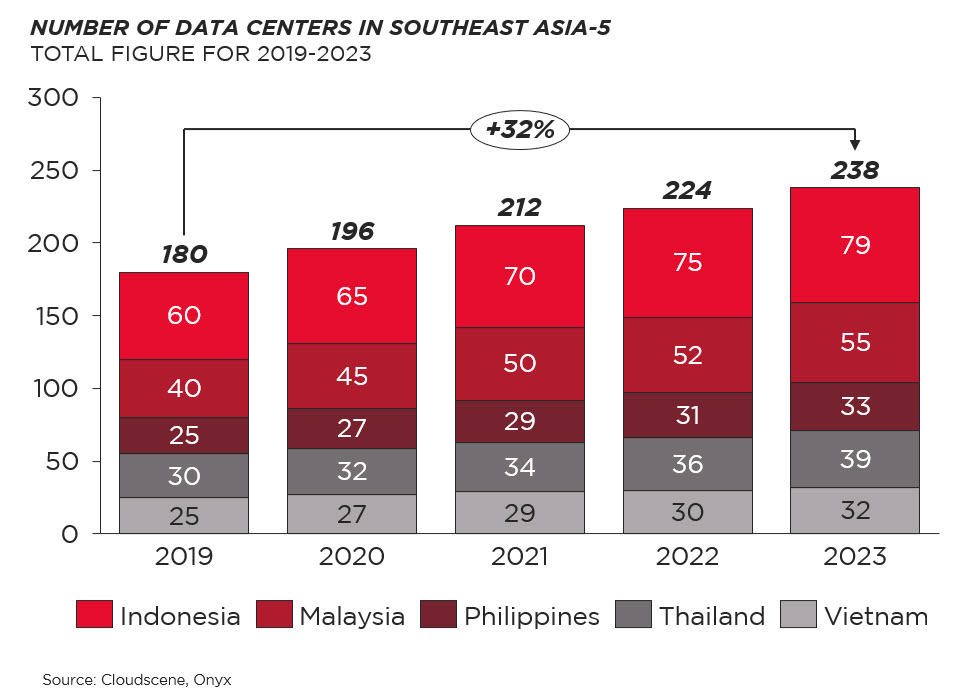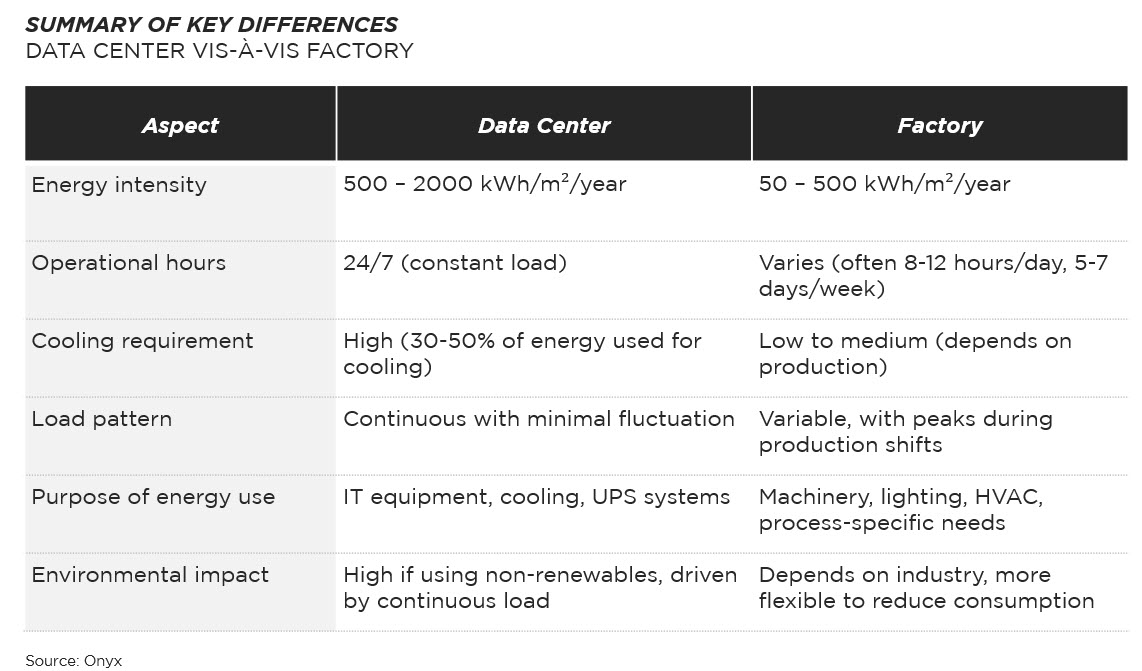
Search our articles
Rising demand for data centers and its impact on Southeast Asia-5’s energy landscape

Key Insights:
- What is happening: Southeast Asia-5 (SEA-5) countries – Indonesia, Malaysia, Philippines, Thailand, and Vietnam - have implemented data localization policies. These policies have driven up demand for local data centers, resulting in a 28% increase in the number of data centers built across these countries between 2019 and 2023.
- Why it matters: Data centers consume 4 to 5 times more electricity per square meter annually than factories. As more local data centers are built to meet data localization requirements, the SEA-5 countries will face rising energy demand, potentially intensifying competition for electricity and challenging businesses seeking to expand manufacturing operations.
- What happens next: The rapid growth of AI and friendshoring in Southeast Asia is driving increased demand for data centers and manufacturing, placing significant strain on already fragile power grids. While major tech companies are investing heavily in the region's infrastructure, the rising energy needs could lead to greater reliance on fossil fuels, particularly coal, which risks undermining the region's long-term decarbonization efforts.
ANALYSIS
Data localization policies drive up the demand of data center in Southeast Asia-5 countries
In recent years, Southeast Asia-5 (SEA-5) countries—Indonesia, Malaysia, Philippines, Thailand, and Vietnam—have witnessed a significant transformation in their digital infrastructure. This shift is primarily driven by the implementation of data localization policies, which mandate that data generated within a country must be stored and processed locally. These policies have led to a surge in the demand for local data centers, resulting in a remarkable 32% increase in the number of data centers built across these countries between 2019 and 2023.

The energy conundrum
While the growth of data centers boosts the development of the region’s digital economy, it presents a unique challenge for the energy landscape in SEA-5. Data centers are substantially more energy-intensive than traditional factories, consuming around four to five times more electricity per square meter annually. As the number of local data centers continues to grow to comply with data localization requirements, SEA-5 countries are experiencing a significant increase in energy demand. This situation could pose challenges for businesses looking to expand their manufacturing operations in the region, as it intensifies competition for electricity resources.

The outlook
The global boom in artificial intelligence (AI) is likely to accelerate demand for data centers, particularly in Southeast Asia. Major tech companies like Oracle, Amazon Web Services, Microsoft, and Google are set to invest approximately $16 billion to establish data centers and AI and cloud infrastructure in the SEA-5 region. However, the power grids in several SEA-5 countries are already under pressure, with concerns over grid stability and frequent blackouts in some areas. The increasing energy demand from both data centers and growing manufacturing activity—driven by friendshoring—could exacerbate these challenges unless significant investments in grid infrastructure and capacity upgrades are made.
Additionally, SEA-5 countries are under increasing pressure to reduce their dependence on fossil fuels and transition to renewable energy sources. As energy demand surges with the expansion of data centers and friendshoring activities, there is a risk that these nations may turn to fossil fuels, particularly coal, to meet short-term electricity needs. This could create a conflict between the region's immediate growth objectives and its long-term decarbonization goals.
Topics: Southeast Asia, Infrastructure, Technology

Written by Onyx Strategic Insights

